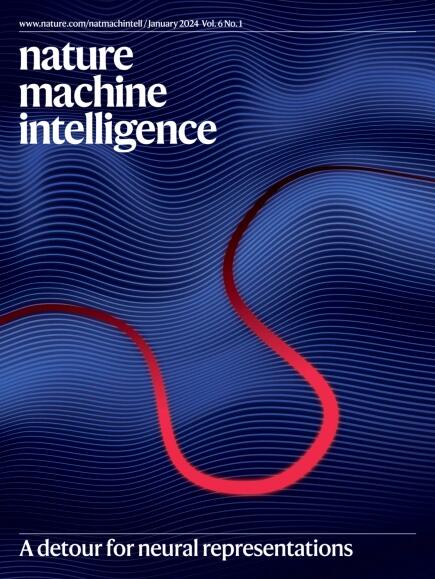深层神经网络与人类的表征对齐的维度
IF 23.9
1区 计算机科学
Q1 COMPUTER SCIENCE, ARTIFICIAL INTELLIGENCE
引用次数: 0
摘要
确定人类与人工智能(AI)之间的异同是计算认知神经科学和机器学习的一个重要目标,有望更深入地了解人类认知和更安全、更可靠的人工智能系统。之前很多比较人类和人工智能表征的工作都依赖于全局的标量度量来量化它们的一致性。然而,如果没有明确的假设,这些措施只能告诉我们对齐的程度,而不是决定它的因素。为了应对这一挑战,我们提出了一个通用框架来比较人类和人工智能的表征,该框架基于识别两个领域中相同行为的潜在表征维度。将该框架应用于人类和自然图像的深度神经网络(DNN)模型,揭示了视觉和语义维度的低维DNN嵌入。与人类相比,dnn在视觉属性上明显优于语义属性,这表明了表示图像的不同策略。尽管在计算机实验中显示DNN维度的可解释性似乎一致,但人类和DNN表征之间的直接比较揭示了它们在处理图像的方式上的实质性差异。通过使表征直接具有可比性,我们的结果揭示了表征一致性的重要挑战,并提供了提高其可比性的方法。本文章由计算机程序翻译,如有差异,请以英文原文为准。


Dimensions underlying the representational alignment of deep neural networks with humans
Determining the similarities and differences between humans and artificial intelligence (AI) is an important goal in both computational cognitive neuroscience and machine learning, promising a deeper understanding of human cognition and safer, more reliable AI systems. Much previous work comparing representations in humans and AI has relied on global, scalar measures to quantify their alignment. However, without explicit hypotheses, these measures only inform us about the degree of alignment, not the factors that determine it. To address this challenge, we propose a generic framework to compare human and AI representations, based on identifying latent representational dimensions underlying the same behaviour in both domains. Applying this framework to humans and a deep neural network (DNN) model of natural images revealed a low-dimensional DNN embedding of both visual and semantic dimensions. In contrast to humans, DNNs exhibited a clear dominance of visual over semantic properties, indicating divergent strategies for representing images. Although in silico experiments showed seemingly consistent interpretability of DNN dimensions, a direct comparison between human and DNN representations revealed substantial differences in how they process images. By making representations directly comparable, our results reveal important challenges for representational alignment and offer a means for improving their comparability. An interpretability framework that compares how humans and deep neural networks process images has been presented. Their findings reveal that, unlike humans, deep neural networks focus more on visual properties than semantic ones, highlighting divergent representational strategies.
求助全文
通过发布文献求助,成功后即可免费获取论文全文。
去求助
来源期刊

Nature Machine Intelligence
Multiple-
CiteScore
36.90
自引率
2.10%
发文量
127
期刊介绍:
Nature Machine Intelligence is a distinguished publication that presents original research and reviews on various topics in machine learning, robotics, and AI. Our focus extends beyond these fields, exploring their profound impact on other scientific disciplines, as well as societal and industrial aspects. We recognize limitless possibilities wherein machine intelligence can augment human capabilities and knowledge in domains like scientific exploration, healthcare, medical diagnostics, and the creation of safe and sustainable cities, transportation, and agriculture. Simultaneously, we acknowledge the emergence of ethical, social, and legal concerns due to the rapid pace of advancements.
To foster interdisciplinary discussions on these far-reaching implications, Nature Machine Intelligence serves as a platform for dialogue facilitated through Comments, News Features, News & Views articles, and Correspondence. Our goal is to encourage a comprehensive examination of these subjects.
Similar to all Nature-branded journals, Nature Machine Intelligence operates under the guidance of a team of skilled editors. We adhere to a fair and rigorous peer-review process, ensuring high standards of copy-editing and production, swift publication, and editorial independence.
 求助内容:
求助内容: 应助结果提醒方式:
应助结果提醒方式:


